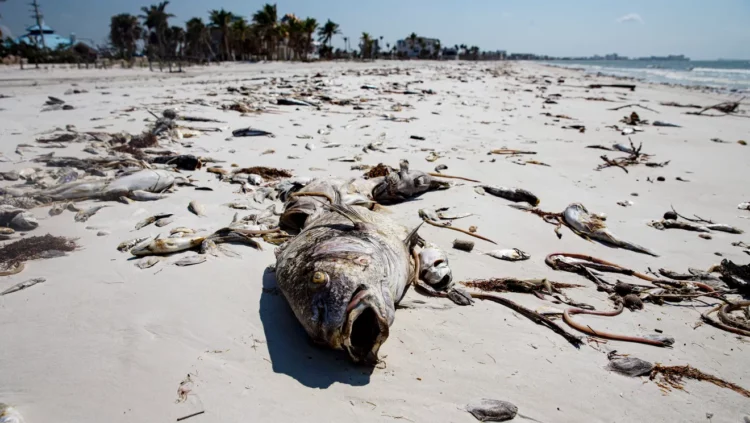

Join us on April 17 at 1 pm ET for the final seminar in our Planning for Actionable Science in the Gulf of Mexico series.
In 2023, 10 projects were funded by the NOAA RESTORE Science Progam’s Actionable Science competition to conduct previously planned research in the Gulf of Mexico. Though each project conducted a collaborative planning process prior to receiving this funding, that process varied greatly from team to team. This seminar series will highlight the variety of approaches to planning applied research that were taken by each team. Planning activities include holding workshops to convene interested parties, conducting preliminary research to identify research gaps, and building relationships among team members to support better communication throughout the project.
Join this series to hear lessons learned from teams that have prioritized collaborative processes in their research planning. For more information on the 10 projects funded, visit the award announcement.
Our third seminar will take place next Wednesday. We will be joined by Courtney Saari and Dr. Scott Socolofsky. It’s not too late to register here.
Our final seminar will take place on April 17. We will be joined by Dr. Nathan Vaughan and Dr. David Chagaris. See more details about their presentations below.
Dr. Nathan Vaughan, Vaughan Analytics
Lessons Learned in the Co-Production of Improved Fisheries Management Advice for the Gulf of Mexico
The restoration and maintenance of healthy fish populations in the Gulf of Mexico is a key priority of natural resource managers at NOAA and the Gulf of Mexico Fishery Management Council. Managing these populations maintains the robust marine ecosystem needed to support a large fishery-based economy within the Gulf states. The development of stock assessment models needed for fisheries management is a complex process, particularly in the Gulf where a diverse range of commercial, charter, for-hire, and private recreational fleets target multiple species simultaneously. These complex fishery dynamics, in combination with changing environmental conditions and ecosystem impacts, make a one-size-fits-all assessment process infeasible. This complexity and often limited data resources require many expert judgment decisions to be made. Additionally, unexpected species-specific issues frequently require the rapid integration of new techniques during the assessment process. Producing robust, timely, concise, and easily interpretable management advice for a broad audience of managers and stakeholders under these conditions is an ongoing challenge. This presentation will review the co-production process and lessons learned over the past several years as our team of assessment scientists throughout the Southeast region has worked to review existing assessment practices and identify optimal areas for future research. We will also review our plans to co-produce actional management advice over the next five years to improve the accuracy, interpretability, and throughput of future stock assessment advice in the Gulf of Mexico. Learn more about the project here.
Dr. David Chagaris, Nature Coast Biological Station, University of Florida
Accounting for Red Tide Mortality in Fisheries Stock Assessments and Management Advice in the Gulf of Mexico
Red tides are a harmful algal bloom caused by the toxic dinoflagellate, Karenia brevis, which may cause massive fish kills, mortality on marine megafauna, persistent hypoxic conditions, respiratory distress in humans, shellfish harvest closures, and loss of fisheries and tourism revenues. Red tides also present challenges for assessing and managing Gulf of Mexico fisheries stocks. Often, they are a major source of uncertainty when setting the acceptable biological catch (ABC) and assumed severity of recent or ongoing blooms can drastically alter projected stock status and catch advice. Recently, a spatially explicit fisheries ecosystem model of the West Florida Shelf (WFS) was developed to provide timely assessments of red tide impacts and inform fisheries management. Near-real time estimates from the WFS red tide model were used by the Gulf Scientific and Statistical Committee (SSC) when setting the final catch advice for gag following the most recent stock assessment. This marked the first use of an ecosystem model in a fisheries management decision in the Gulf of Mexico. To develop the WFS model and its application to red tide, project scoping and design occurred through a combination of collaborative research projects, dedicated modeling workshops, participation in the stock assessment process, and presentations to scientific advisory committees. Along the way, it was important to work within the existing fisheries stock assessment and management framework, which provided multiple opportunities to contribute scientific advice. Close coordination with NOAA stock assessment scientists was necessary to ensure model outputs were properly formatted, and Council staff ensured the SSC was receiving the information to support decision making. Future work will focus on transitioning to a new satellite for red tide detection, incorporation of biogeochemical processes and hypoxia, model calibration, and routine management application. Learn more about the project here.
 Official websites use.gov
A .gov website belongs to an official government organization in the United States.
Official websites use.gov
A .gov website belongs to an official government organization in the United States.
 Secure .gov websites use HTTPS
A lock or https:// means you’ve safely connected to the .gov website. Share sensitive information only on official, secure websites.
Secure .gov websites use HTTPS
A lock or https:// means you’ve safely connected to the .gov website. Share sensitive information only on official, secure websites.